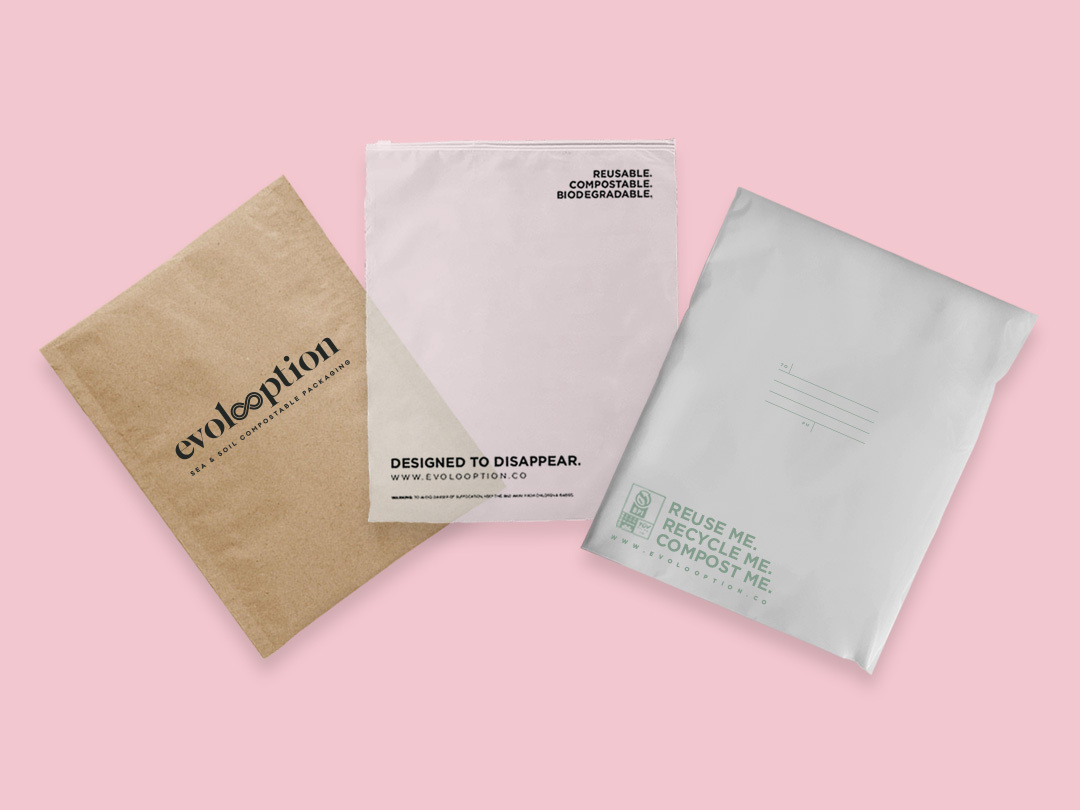
Biodegradable Material for Bags
Biodegradable Material for Bags
Biodegradable bags, also known as eco-friendly bags, compostable bags or bioplastics, are becoming mainstream, which is a big win for the planet. It’s only a small step, yet with continued support, its impact can definitely lead us into a plastic-free future. This growing popularity of biodegradable bags among consumers and the retail industry is creating a promising and healthy competition in the market.
The global bioplastics market is expected to expand by 36% over by 2026, with Asia as a leading major production hub in regional capacity development. More manufacturers, including large plastic corporations, are exploring innovative processes, materials and means of production of packaging solutions that will lessen plastic wastes and harm on the environment.
Where are biodegradable bags made from?
Biodegradable plastics were developed as a solution to plastics pollution. Did you know that as early as 1862, scientists were already exploring bioplastics? British chemist Alexander Parkes invented parkesine, the first man-made biobased plastic made from cellulose. Since then, the history of bioplastics has gone through major discovery and innovation.
More than a hundred years later, in the 20th century, several companies pioneered an industry that developed bioplastics such as Marlborough Biopolymers (UK) in 1983 and Novamont (IT) in 1990. Today, the increasing demand for sustainable packaging materials is driving the bioplastic market growth to $16.8 billion by 2030 with packaging, agriculture and F&B leading the adoption of bioplastics.
So, what materials are used for biodegradable bags? How does it help our environment?
Starch-based biodegradable materials
Most biodegradable bags are known to be made from natural cornstarch. This is actually polylactic acid, a bioplastic produced from corn, which performs similarly to conventional plastics. This type of material absorbs the same amount of carbon dioxide as the plants that were used to make them. Therefore, when PLA breaks down, it doesn’t contribute a net increase in carbon dioxide gas.
Additionally, starch-based biodegradable bags are compostable— when the cornstarch compound absorbs water, it breaks apart into small fragments that can be easily digested by bacteria.
Petrochemicals
Biodegradable supermarket bags with terms such as photodegradable or oxodegradable in their labels are made from petrochemicals. These are additives that decompose in light and oxygen. However, as harmless as they can be, they are unsuitable for composting because they still leave a toxic residue or tiny plastic fragments that can still harm marine life.
Recycled Plastics
Recycling plastics is the solution to single use plastics and plastic disposal. Keep in mind that recycled plastics can still help the environment only if the recycling process is beneficial to the environment such as a net saving of energy and water, as well as net reduction in greenhouse emission.
Where are biodegradable bags made from?
It’s exciting to witness where our global solution to plastic pollution will bring us. Presently, there is still more work to do. Manufacturers, both big and small, are developing bioplastics from natural materials. Here are a few examples:
- Biodegradable polymers made from rice starch were developed by Finnish researchers to use for food packaging.
- Used frying oil was also discovered to be a great source of polyhydroxybutyrate, a type of polymer that can be used to make bioplastics.
- Dutch designers Eric Klarenbeek and Maartje Dros invented a form of bioplastic made from algae that can be used for 3D printers.
- The Centre of Sustainable Chemical Technologies (CSCT) at the University of Bath invented a biodegradable form of plastic made from sugar and carbon dioxide.
- In 2010, an 11-year-old inventor discovered that banana leaves can be used to make biodegradable packaging. The now-patented innovation was developed by Tenith Adithyaa in his homemade laboratory. It has since been recognized in several international awards.
Evolooption is a Singapore-owned company that is committed to help the environment and shape a better future by providing biodegradable e-commerce and supply chain packaging solutions for large enterprises and small start-ups.
Our core business as innovators and problem solvers, we have designed own bio polymer formulation which we will be ready to scale up by Q4 2022. We are currently working on a thermal bio plastic material in our lab so watch this space!
Browse through our online shop or talk to us about your customised branding preference for your compostable bag or mailer for your business.

